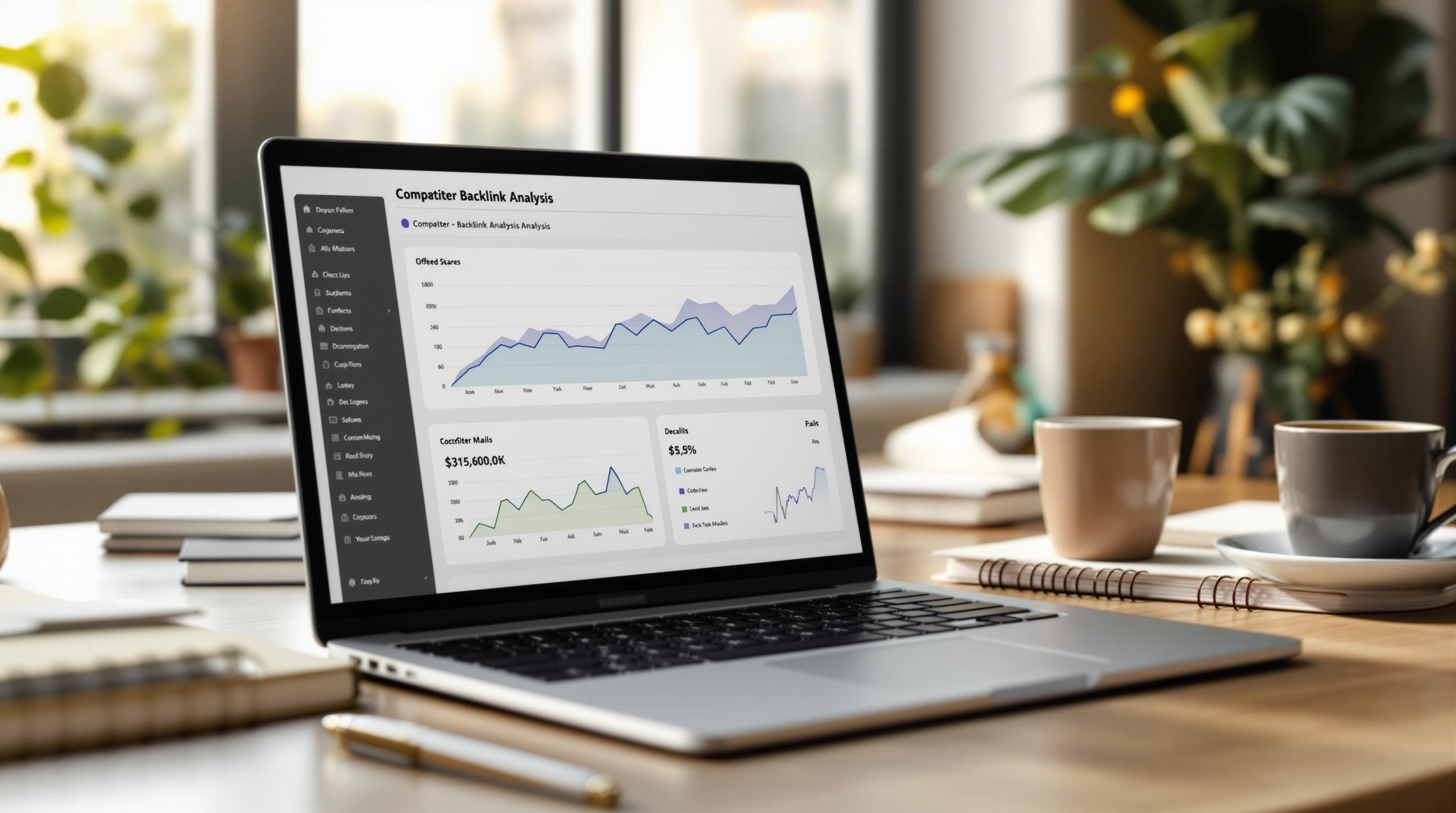Evergreen content is content that stays relevant and useful over time, unlike trend-based or news articles that quickly become outdated. It’s a key strategy for driving consistent traffic, improving SEO performance, and building authority in your industry. Here's a quick guide to get started:
- Focus on Timeless Topics: Write how-to guides, answer common questions, and cover core industry concepts that don’t change.
- Use SEO Tools: Research keywords with steady search demand and optimize your content for search engines.
- Write for Readability: Use clear headings, short paragraphs, and visuals like charts or infographics to improve engagement.
- Maintain Content: Regularly update statistics, examples, and technical details to keep your content accurate.
Benefits of Evergreen Content
- Sustained Traffic: Attracts visitors over time without losing relevance.
- Cost Efficiency: Requires fewer updates compared to trend-based content.
- Improved SEO: Builds domain authority and earns backlinks.
By following these steps, you can create content that continues to perform well and stays valuable for your audience.
What is Evergreen Content? 12 Tips for Creating It
Step 1: Plan Your Content Strategy
To create evergreen content, start by focusing on topics that stand the test of time, identifying relevant keywords, and using reliable tools to guide your efforts.
Choose Timeless Topics
Pick topics that stay useful and relevant no matter the trends. Some great options include:
- How-to guides: Step-by-step tutorials that teach essential skills.
- Core industry concepts: Foundational ideas that don’t change.
- Problem-solving content: Answers to common, recurring questions.
- Resource collections: Lists of tools, techniques, or references that remain useful over time.
Research Keywords That Last
Find keywords that reflect ongoing interest and steady search demand. Here’s how:
- Understand search intent: Look for keywords tied to informational searches that people consistently look for.
- Check for stable search volume: Use tools like AnswerThePublic to identify terms with steady interest over time.
- Mix broad and specific keywords: Combine high-traffic keywords with niche, long-tail terms to strengthen your reach and authority.
Use this research to fine-tune your content approach.
Leverage SEO Tools
A good SEO toolset is key to your strategy. Use resources like the Top SEO Marketing Directory to access tools for:
- Keyword research and trend insights.
- Content planning and optimization.
- Technical SEO checks.
- Tracking performance metrics.
These tools can help you stay on track and ensure your content delivers long-term results.
Step 2: Write Evergreen Content
Write Content That Shows Expertise
Creating content that reflects expertise requires in-depth knowledge and solid research. Start with the basics and gradually introduce more advanced ideas. For instance, if you're writing about SEO strategies, cover foundational topics like keyword research before diving into technical aspects like on-page optimization.
Incorporate practical examples and actionable advice. Provide clear steps that readers can follow, supported by up-to-date industry data and research.
Once your content is solid, make it easy to read and navigate.
Make Your Content Easy to Read
Break down complex topics with clear headings, and keep paragraphs short - around 2–3 sentences. Use headers that accurately describe what's in each section, making it easier for readers to follow along.
Here are some tips to improve readability:
- Use white space: Leave enough room between sections and paragraphs.
- Highlight key points: Use bold text to emphasize important ideas.
- Write short sentences: Keep your writing concise and straightforward.
- Add transition words: Help readers move smoothly from one idea to the next.
To make your content even more engaging, include visuals that add real value.
Include Visuals That Matter
Choose visuals that explain or enhance your content rather than just filling space.
Here’s how different types of visuals can be useful:
| Visual Type | Purpose |
|---|---|
| Infographics | Breaking down complex ideas or data |
| Screenshots | Showing step-by-step instructions or examples |
| Charts/Graphs | Presenting data and trends |
| Diagrams | Explaining concepts or relationships |
When adding visuals:
- Use high-quality images optimized for web use.
- Write descriptive alt text for accessibility.
- Ensure visuals work well on mobile devices.
- Label charts and graphs clearly for better understanding.
- Maintain a design style that aligns with your brand.
sbb-itb-5be333f
Step 3: Apply SEO Best Practices
Once you've planned and written your evergreen content, it's time to fine-tune it for search engines. Here's how you can optimize your content for better visibility and performance.
Optimize Page Elements
Start with the basics: titles and meta descriptions. Write short, keyword-focused titles that clearly explain your content. For meta descriptions, include your main keyword, align with search intent, and make them enticing enough to encourage clicks.
Use header tags to organize your content effectively:
| Header Type | Purpose | Best Practice |
|---|---|---|
| H1 | Main title | Use only once; include the primary keyword |
| H2 | Major sections | Incorporate secondary keywords |
| H3 | Subsections | Add related terms naturally |
| H4–H6 | Detailed points | Keep a logical hierarchy |
Headers not only improve readability but also help search engines understand your content better.
Build Internal Links
Internal links connect your content and enhance navigation for both users and search engines. Here's how to make the most of them:
- Link to relevant and informative pages that complement your topic.
- Use descriptive anchor text that includes your keywords naturally.
- Ensure the links flow seamlessly within your content.
If your site has a lot of content, tools like Link Whisper can simplify the process by finding linking opportunities for you.
Fix Technical SEO Issues
Technical SEO ensures your content is fast, accessible, and easy to navigate. Use tools like Google PageSpeed Insights or Lighthouse to assess your site’s performance. Focus on these key areas:
-
Page Speed Optimization
Compress images, minimize code, and enable browser caching to improve loading times. -
Mobile Responsiveness
Check how your site looks and works on different devices. Text should be readable, and images should scale properly. -
Site Architecture
Keep your URLs clear and logical, use XML sitemaps, manage your robots.txt file, and fix any broken links or redirects.
Regular technical audits with tools like Screaming Frog SEO Spider can help you spot and fix problems early. A well-maintained site ensures your content performs at its best over time.
Step 4: Keep Content Updated
Evergreen content needs regular updates to stay relevant. A structured plan for revisiting and updating content helps keep your articles accurate and performing well in search rankings.
Set Review Schedules
Create a review calendar using these guidelines:
| Content Type | Review Frequency | Update Priority |
|---|---|---|
| Statistical content | Every 3-6 months | High |
| Industry guides | Every 6-12 months | Medium |
| Basic concepts | Annually | Low |
| Tool/feature tutorials | When major changes occur | High |
Use your CMS to track review dates and set reminders. Start with content that brings in the most traffic or conversions.
Update Old Content
When revising older content, focus on these areas:
- Update Statistics: Replace outdated stats with the latest numbers (e.g., swap 2023 data for 2025 figures).
- Refresh Examples: Update case studies or examples to reflect current trends or practices.
- Ensure Technical Accuracy: Revise technical details, especially for tools or platforms that change frequently.
Monitor Content Performance
Keep an eye on these metrics to identify content that might need updates:
| Metric | Tool | Action Trigger |
|---|---|---|
| Organic traffic | Google Analytics | 20% drop over 3 months |
| Bounce rate | Google Analytics | Exceeds 65% |
| Time on page | Google Analytics | Falls below 2 minutes |
| SERP position | Search Console | Drops by 3+ positions |
| Backlink count | Ahrefs/SEMrush | 10% decrease in 30 days |
Set up alerts in your analytics tools to notify you when these metrics dip below your targets. This way, you can address issues quickly before they hurt your SEO performance.
When making updates, be sure to log:
- The update date
- Specific changes made
- Reasons for the changes
- Any noticeable impact on performance
Keeping a record of updates not only helps you measure their success but also guides future revisions. Regularly revisiting your content ensures it continues to be a valuable resource.
Build Your Strategy
Focus on Long-term Results
Evergreen strategies are all about creating content that stays relevant over time, driving consistent traffic and maintaining strong rankings. When done right, evergreen content becomes a cornerstone for your digital presence, delivering ongoing benefits. Unlike timely pieces that lose relevance quickly, evergreen content keeps attracting readers long after it's published.
Here are some key metrics to track the success of your evergreen content:
- Organic traffic growth
- Improved search rankings
- Continued relevance over time
- An increase in backlinks
Take Action Now
The long-lasting advantages of evergreen content make it worth starting right away. Here's how to get moving:
- Research Smartly: Use reliable SEO tools (like those in the Top SEO Marketing Directory) to uncover steady-performing keywords and timeless topics.
- Create Meaningful Content: Focus on answering core industry questions and explaining fundamental concepts rather than jumping on short-lived trends.
- Optimize for Success: Apply technical SEO best practices, such as clear URL structures, concise meta descriptions, and effective internal linking.
- Stay on Top of Updates: Schedule regular reviews - quarterly works well - to ensure your content remains accurate and useful. Use performance data to decide what needs updating first.


